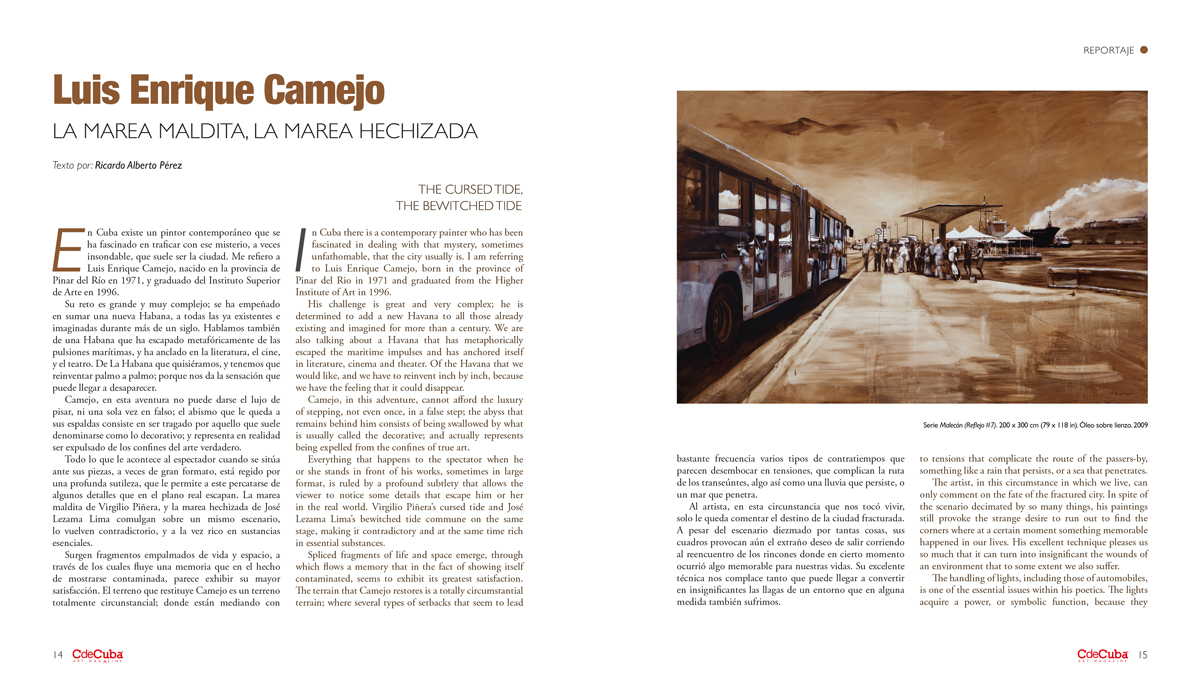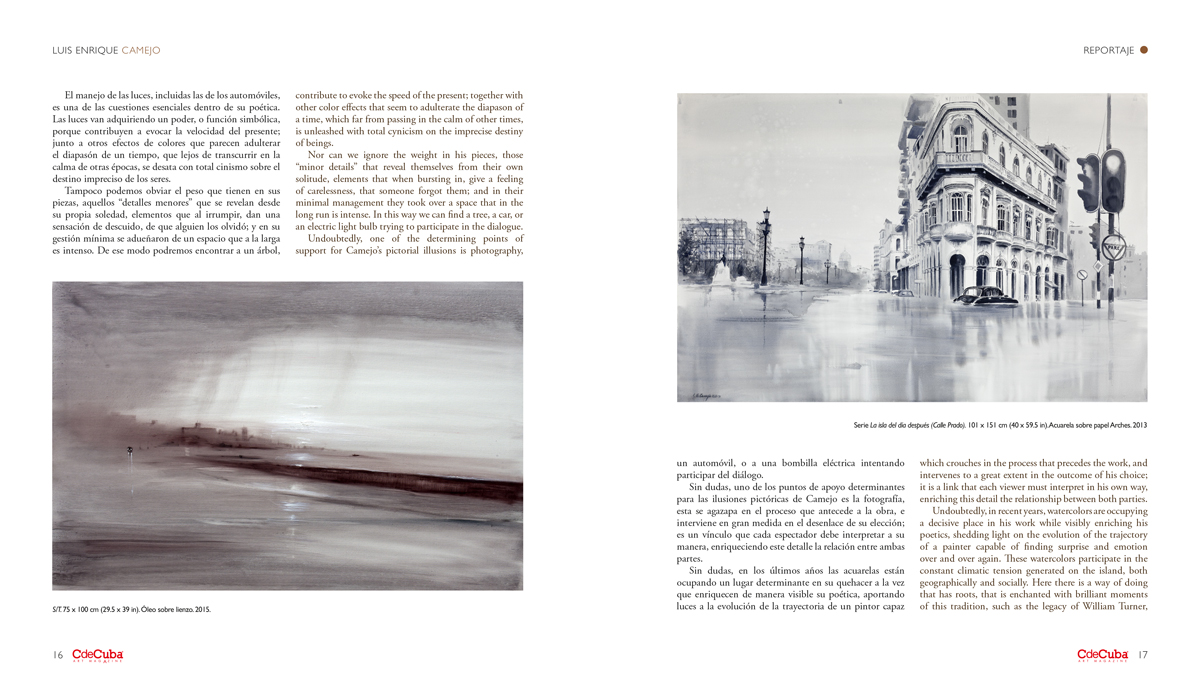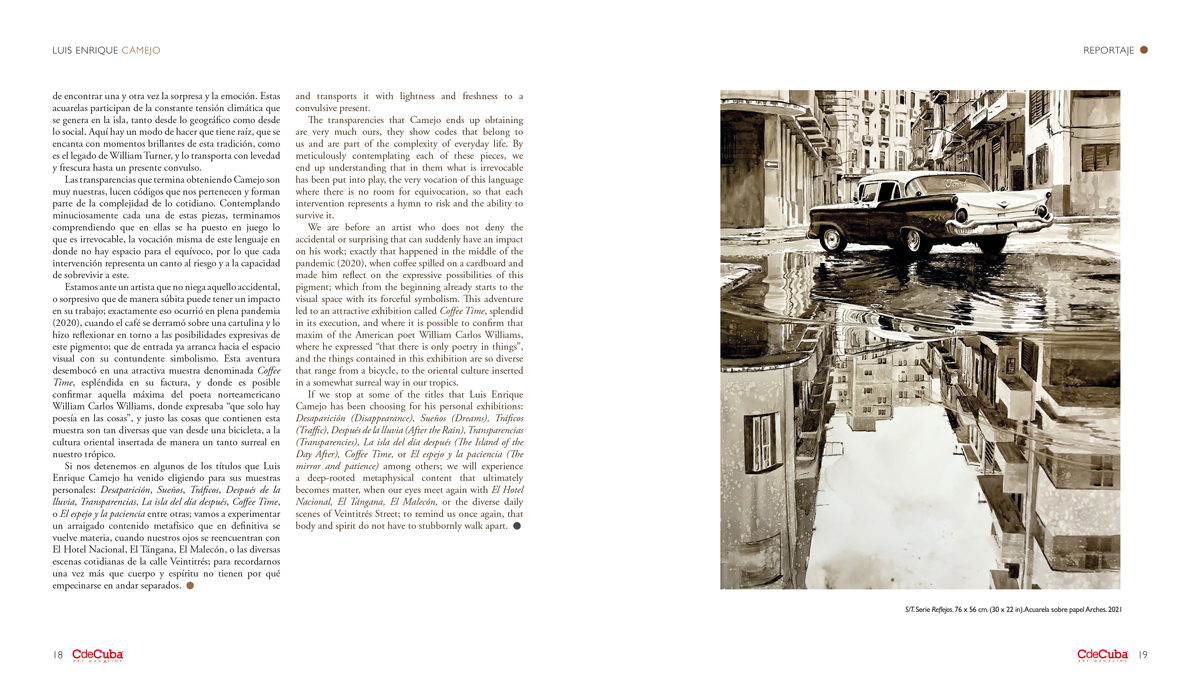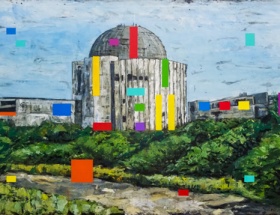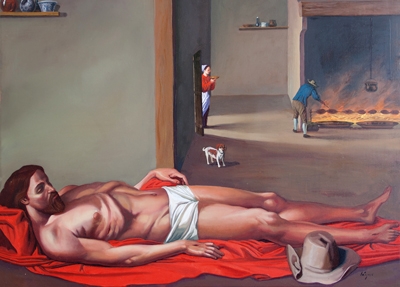The Cursed Tide, The Bewitched Tide
By Ricardo Alberto Pérez
In Cuba there is a contemporary painter who has been fascinated in dealing with that mystery, sometimes unfathomable, that the city usually is. I am referring to Luis Enrique Camejo, born in the province of Pinar del Rio in 1971 and graduated from the Higher Institute of Art in 1996.
His challenge is great and very complex; he is determined to add a new Havana to all those already existing and imagined for more than a century. We are also talking about a Havana that has metaphorically escaped the maritime impulses and has anchored itself in literature, cinema and theater. Of the Havana that we would like, and we have to reinvent inch by inch, because we have the feeling that it could disappear.
Camejo, in this adventure, cannot afford the luxury of stepping, not even once, in a false step; the abyss that remains behind him consists of being swallowed by what is usually called the decorative; and actually represents being expelled from the confines of true art.
Everything that happens to the spectator when he or she stands in front of his works, sometimes in large format, is ruled by a profound subtlety that allows the viewer to notice some details that escape him or her in the real world. Virgilio Piñera’s cursed tide and José Lezama Lima’s bewitched tide commune on the same stage, making it contradictory and at the same time rich in essential substances.
Spliced fragments of life and space emerge, through which flows a memory that in the fact of showing itself contaminated, seems to exhibit its greatest satisfaction. The terrain that Camejo restores is a totally circumstantial terrain; where several types of setbacks that seem to lead to tensions that complicate the route of the passers-by, something like a rain that persists, or a sea that penetrates.
The artist, in this circumstance in which we live, can only comment on the fate of the fractured city. In spite of the scenario decimated by so many things, his paintings still provoke the strange desire to run out to find the corners where at a certain moment something memorable happened in our lives. His excellent technique pleases us so much that it can turn into insignificant the wounds of an environment that to some extent we also suffer.
The handling of lights, including those of automobiles, is one of the essential issues within his poetics. The lights acquire a power, or symbolic function, because they contribute to evoke the speed of the present; together with other color effects that seem to adulterate the diapason of a time, which far from passing in the calm of other times, is unleashed with total cynicism on the imprecise destiny of beings.
Nor can we ignore the weight in his pieces, those “minor details” that reveal themselves from their own solitude, elements that when bursting in, give a feeling of carelessness, that someone forgot them; and in their minimal management they took over a space that in the long run is intense. In this way we can find a tree, a car, or an electric light bulb trying to participate in the dialogue.
Undoubtedly, one of the determining points of support for Camejo’s pictorial illusions is photography, which crouches in the process that precedes the work, and intervenes to a great extent in the outcome of his choice; it is a link that each viewer must interpret in his own way, enriching this detail the relationship between both parties.
Undoubtedly, in recent years, watercolors are occupying a decisive place in his work while visibly enriching his poetics, shedding light on the evolution of the trajectory of a painter capable of finding surprise and emotion over and over again. These watercolors participate in the constant climatic tension generated on the island, both geographically and socially. Here there is a way of doing that has roots, that is enchanted with brilliant moments of this tradition, such as the legacy of William Turner, and transports it with lightness and freshness to a convulsive present.
The transparencies that Camejo ends up obtaining are very much ours, they show codes that belong to us and are part of the complexity of everyday life. By meticulously contemplating each of these pieces, we end up understanding that in them what is irrevocable has been put into play, the very vocation of this language where there is no room for equivocation, so that each intervention represents a hymn to risk and the ability to survive it.
We are before an artist who does not deny the accidental or surprising that can suddenly have an impact on his work; exactly that happened in the middle of the pandemic (2020), when coffee spilled on a cardboard and made him reflect on the expressive possibilities of this pigment; which from the beginning already starts to the visual space with its forceful symbolism. This adventure led to an attractive exhibition called Coffee Time, splendid in its execution, and where it is possible to confirm that maxim of the American poet William Carlos Williams, where he expressed “that there is only poetry in things”, and the things contained in this exhibition are so diverse that range from a bicycle, to the oriental culture inserted in a somewhat surreal way in our tropics.
If we stop at some of the titles that Luis Enrique Camejo has been choosing for his personal exhibitions: Desaparición (Disappearance), Sueños (Dreams), Tráficos (Traffic), Después de la lluvia (After the Rain), Transparencias (Transparencies), La isla del día después (The Island of the Day After), Coffee Time, or El espejo y la paciencia (The mirror and patience) among others; we will experience a deep-rooted metaphysical content that ultimately becomes matter, when our eyes meet again with El Hotel Nacional, El Tángana, El Malecón, or the diverse daily scenes of Veintitrés Street; to remind us once again, that body and spirit do not have to stubbornly walk apart.
